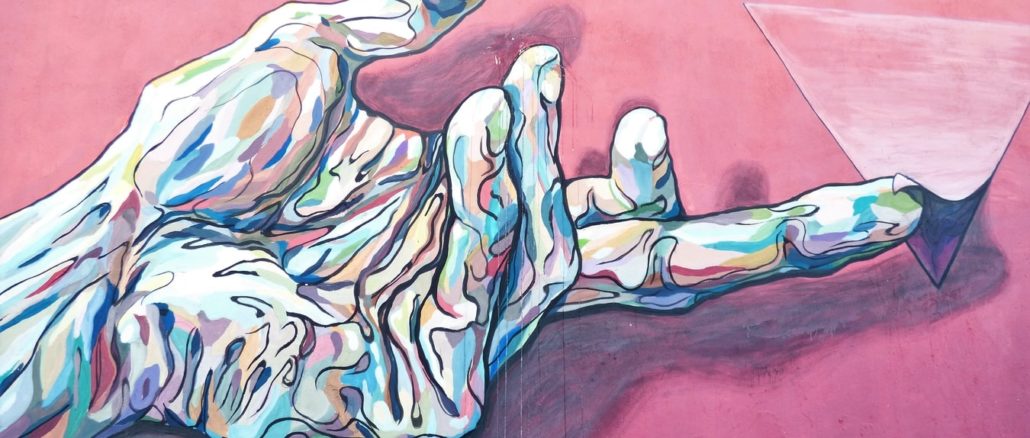
A young girl pushes a car, her wildly thin arms pushing on the steel of the hood. A young girl pushes a car. Her father is in the driver’s seat, trying to turn the engine, trying to get the car running again. It’s wintertime — evening — the day darkening, and a young girl, a daughter perhaps, is pushing the car from behind, straining her thin and lanky body so that it forces the car forward, a crawling movement in the heart of December.
I want to rush across the busy four-lane highway to help her, recognizing her eager strain even from a distance. I want to run and help her, but I am waiting for the city bus, scheduled to arrive any minute. I look at my watch. The girl pushes the car. Darkness deepens, winter twilight softly easing its way into the remaining daylight. She is a girl pushing a car. I am a woman waiting for a bus. Such are the things we do to get from one place to another — to be transported, to move, to go — from one place to another. We push cars. We wait for buses. But in and along the busy highway the commuters are indifferent, their cars working just fine and moving, speeding, their vehicles ready and available so that they do not have to take public transportation or push on broken-down-cars. They turn the key, the car starts, and they go.
The girl is young — eight or ten — wearing pink pants and hair long, loose, and dark. I wonder about her name. Is it a name with four syllables — Mariana, Patricia, Evangeline? Or is it short and distinct — Lori, Ellen, Dana? The girl pushes the car and I cannot help her, instead, I am the stranger watching from across the busy-city-four-lane-street. But I cheer her on from a distance, silently mouthing “come on…come on…” a small unheard prayer for the car to start, hoping her little-long-bird-legs will carry her father’s car into a brilliant go-go-go.
But the car will not start. Frustrated, her father gets out and pushes the car back across the parking lot from whence it came, setting it up for another failed effort. Again and again this pattern is played out. The young girl pushes the car, the father seated inside, turning the key, tires moving inch by inch, the day darkening. The car will not start.
A blue heeler dog sits un-patiently in the back seat, its face pressed up against the window, eager to help the girl that is pushing the car. The windows are up. It is winter. The dog cannot get out. Windows of the car are all the way up. The dog crisscrosses from one passenger window to the other, cheering the girl on with his own feverish excitement, the father in the front seat seemingly oblivious to the energetic dog in the back seat, at least for now, at least until the car is started. But the car will not start.
Bus 251 arrives. It’s my bus, so I get on. And as the diesel engine pulls away heading south, I sit close up against the window, still looking out at the little girl pushing the car. A maroon-four-door-car. I’m not sure of the make or the model. I wonder if this is her reality — one of pushing the car, always and often, to get it to start. She pushes as though it is not the first time with such a struggle, such an adventure. She pushes with an urgency that is familiar.
I am the woman taking the bus. She is the little girl pushing the car that will not start. Both she and I, strangers and travelers in an ordinary city, are just trying to get from one place to another. We are just trying to arrive.

Leeanna T. Torres
Leeanna T. Torres is a native daughter of the American Southwest, with deep Indo-Hispanic roots in New Mexico. She has worked as an environmental professional throughout the West since 2001. Her creative non-fiction work has been published in Blue Mesa Review, Tupelo Quarterly, and is forthcoming in both High Desert Review (2021) and in an anthology by Torrey House Press (2021).
Featured image: Artwork by Gustavo Centurion on Unsplash.


